While the previous photo-reportage brought back eating venues and markets of the early 20th century, the current one is looking at food in the late stages of communism. It is not my purpose the present an exhaustive analysis of communism in Romania; I will solely try to capture bits and pieces specifically related to food practices. I would ask the esteemed reader to keep in mind that this is a punctual account, that presents only one facet of communism. At the same time, it important to mention that, while Romanian communism spreads for about 30 years- formally, at least- not the entire period was the same.
The grocery stores
My parents’ memories, together with our collective memories of late communist times, have crossed into a space between legend and crude reality. Grocery stores are evoked as sordid places, with vast empty shelves, scattered with few mocking products. Jars of mustard, pickles, cans full of unknown contents and frozen chicken feet or carcasses.


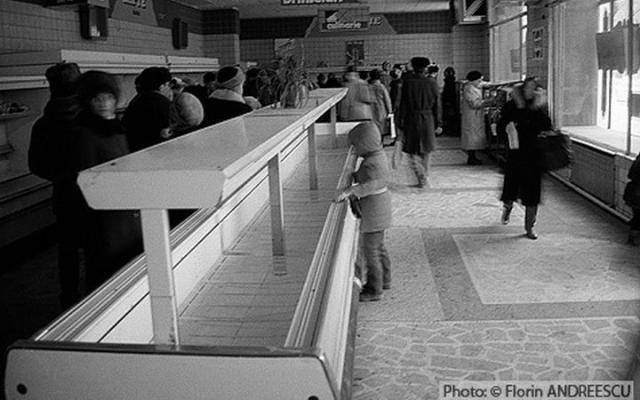


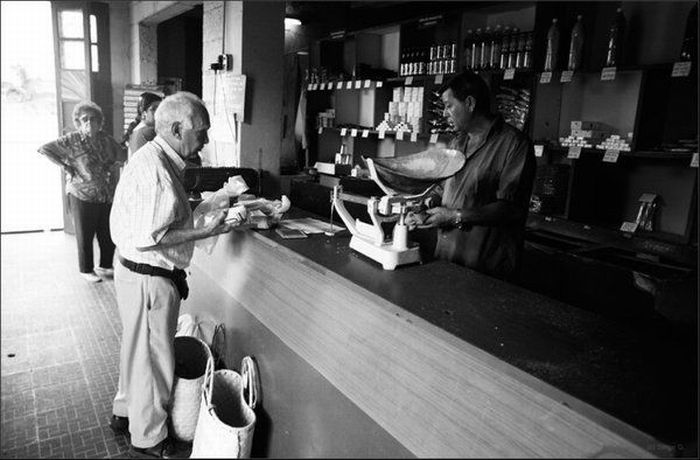
The markets, the quintessential spaces of commercial activity in Eastern Europe, were not richer, either.
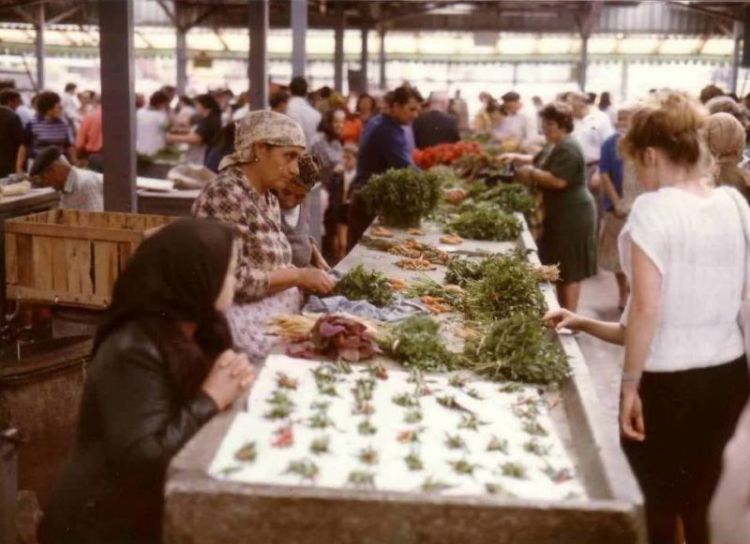
However, when Ceausescu or other high party officials were visiting, things looked quite different.


The lines
The lines have developed into an element of pop culture, becoming the subject of bitter jokes, anecdotes and stories told over a glass of white wine spritzer. The reality is we all have our own memories of standing in line, waiting for whatever was given. Along with the lines-jokes, another legendary character has shaped out: the grocery store sales women. Word has it one could immediately recognize the grocery sales women in the street: they were wrapped lavished furs, wearing gold rings on every finger. They received large bribes to save whatever was given for whomever paid the price.





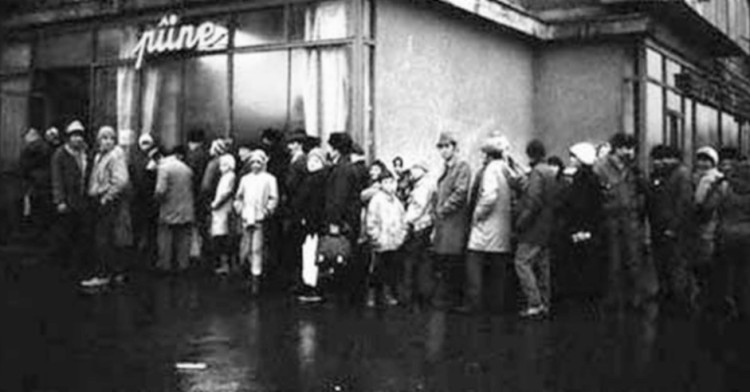
The planned economy, where the dietary needs of the population were defined by the party, was designed and tracked down by means of food cards. The Plan of Scientific Nutrition for the Population was developed in the ’80s and presented as the solution for improving the overall health and well-being of the population. In reality, is was an economic instrument aimed at reducing the cost and paying Romania’s external debt. Here below is an excerpt of what the health officials considered as nutrition norm for an adult.

- Bread: 300 grams per day
- Poultry meat: 1 kilo per month
- Red meat (beef or pork): 500 grams per month
- Cheese: 500 grams every three months
- Butter: 100 grams per month
- Cooking oil: 750 grams per month
- Sugar: 1 kilo per month
- Flour: 1 kilo per months
- Eggs: between 8 to 12 per month
The majority of the population did find alternative means to get by, mostly relying on an ever-flourishing black market and employing every relation they had.
Restaurants, cantines and other eateries
The communal workers cantines replaced the old bars, cafes and stylish restaurants. The aim was the standardization of food intake, regardless of any personal tastes, preferences or financial means. Along with the workers cantines, there were, of course, restaurants. As all other establishments, they were under the supervision and strict control and regulation of the party. Restaurants were only allowed to prepare six dishes at most, including steak. A portion of steak couldn’t weight more than 250 grams. Meat could be used three times a week: poultry on Tuesdays, fish, game or charcuterie on Thursdays, read meat on Sundays. There were, of course, also forbidden foods, that resonated too much with the decadent past and the bourgeois lifestyle. Any kind of goose meat, any kind of sturgeons, luxury charcuterie or smoked meats, cheeses, any dish with flour or eggs. Along with these regulations, the party was also modifying the names of dishes deemed as too bourgeois and giving them generic ones.


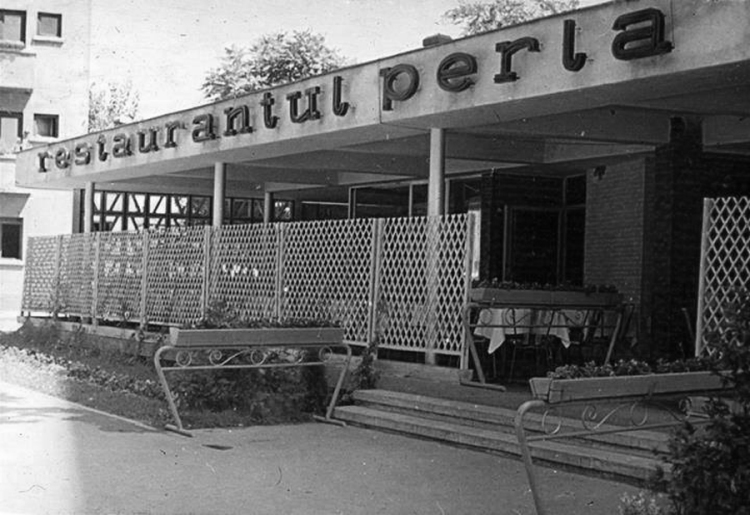

Needless to mention, the propaganda magazines were presenting a very different image.


All images from the www.
